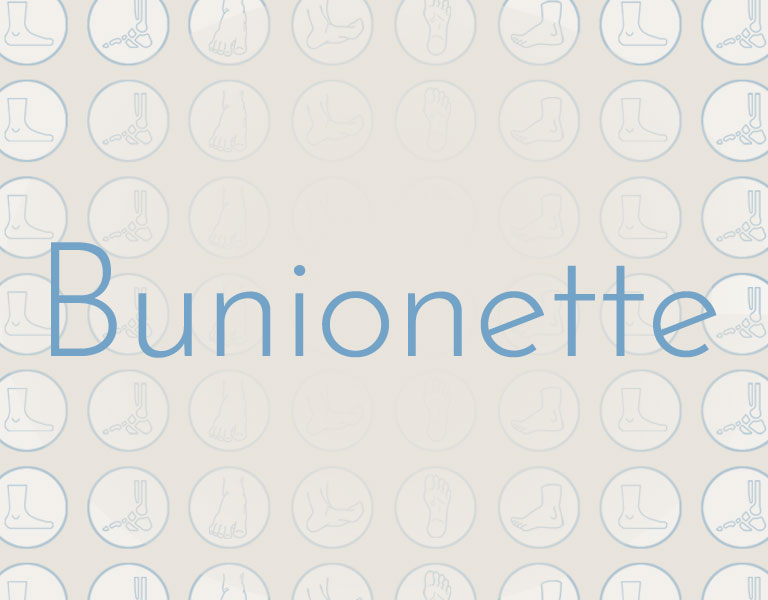Bunionette
Bunionette
A bunionette is similar to a bunion but on the outside edge or lateral side of the foot. It is sometimes referred to as a “tailor’s bunion” due to the fact that tailors once sat cross-legged all day with the outside of their feet rubbing on the ground. This produced a pressure area and callus at the base of the fifth toe.
Anatomy
A bunionette is most likely caused by an abnormal prominence over the fifth metatarsal head rubbing on shoes that are too narrow. As they grow older, some people have a widening of the foot until it spreads or “splays”, causing a bunion on one side of the foot and a bunionette on the other if the patient continues to wear shoes that are too narrow. The constant pressure produces a callus and a thickening of the bursa over the area, leading to a painful knob on the outside of the foot.
Symptoms
The symptoms of a bunionette include pain and difficulty buying shoes that will accommodate the deformity. The swelling in the area causes a visible bump that some people find unsightly.
Diagnosis
The diagnosis of a bunionette is usually obvious on physical examination. X-rays may help to determine whether the joint has arthritis or if there is an abnormal growth from the metatarsal bone.
Medical Treatment
Treatment is very similar to that of a bunion deformity. Anti-inflammatory medications can be helpful in the early stages. Shoes that have a wider toe box and a lower heel often resolve the problem after a few weeks. Small pads or the generous use of lamb’s wool to pad the deformity can decrease the irritation. If all else fails, your surgeon may recommend surgery to remove the bump along the bone and tighten the soft-tissue structures to straighten the 5th toe. Although initially very successful, if you return to tight shoes the deformity frequently returns.



